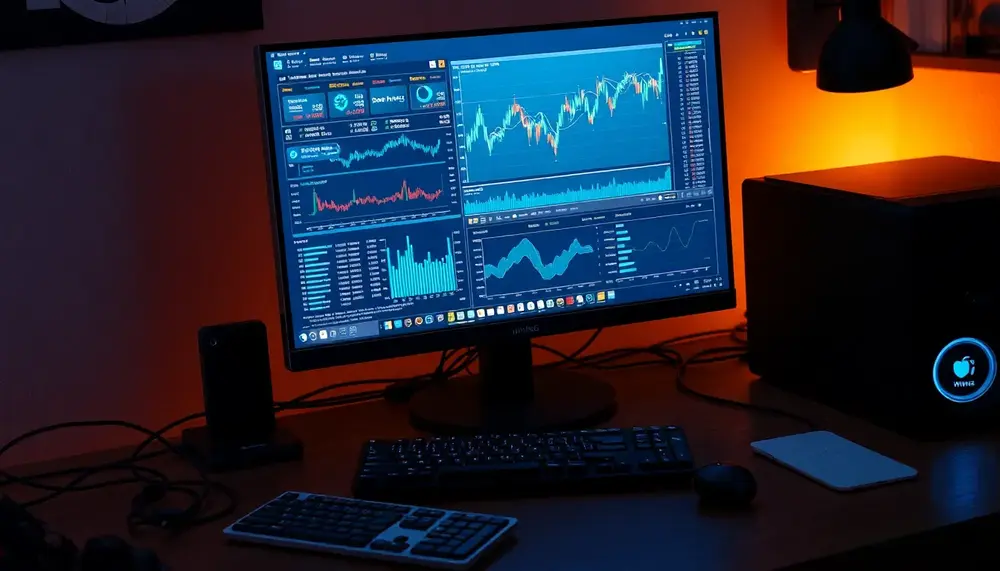Code
Code
Understanding 'Code' in the Context of Bitcoin Mining
When venturing into the world of Bitcoin mining, the term 'Code' becomes everyday vernacular, crucial to one's success. But what exactly is a 'Code' in this domain?
What is 'Code' in Bitcoin Mining?
At its essence, a 'Code' in Bitcoin mining is a set of instructions written in a particular programming language. It is this 'Code' that allows for the creation, distribution, trade, and storage of Bitcoins.
The Basis of Bitcoin Mining
Here's how 'Code' takes centre stage: Bitcoin employs a 'Code' known as the Bitcoin protocol. This protocol contains rules that guide the process of Bitcoin mining, ensuring that it functions efficiently and securely. Without this 'Code', Bitcoin mining, and by extension, the entire digital currency world, would not exist.
Role of 'Code' in Bitcoin Transactions
The Bitcoin 'Code' also determines how transactions are confirmed and added to the blockchain. It works through a process known as consensus, in which mining nodes validate transaction blocks by solving complex mathematical problems. This contribution to the maintenance and security of the blockchain is then rewarded with new Bitcoins - a practice known as 'Code' mining.
Final Thoughts
Understanding the use of 'Code' in Bitcoin mining can be the difference between success and failure in this digital gold rush. With its role in guiding the creation, trade and security of Bitcoin, the 'Code' is indeed the lifeblood for anyone wishing to mine this popular cryptocurrency.
Blog Posts with the term: Code

This guide simplifies Monero solo mining with XMRig, covering setup and optimization to mine efficiently. It explains the benefits of using XMRig, necessary hardware requirements, and how to set up a Monero wallet for secure fund management....

Mining XRP directly is not possible; instead, miners can earn XRP by mining other cryptocurrencies and exchanging them for XRP. This guide covers setting up a secure wallet, choosing the right software like Unmineable or NiceHash, and configuring your mining...

Monero mining on AMD Ryzen CPUs is popular due to their high performance and efficiency; this article provides a guide for optimizing these processors, covering hardware selection, BIOS settings, and software configuration to maximize mining profitability. Key considerations include core...

Setting up a mining pool involves configuring the correct URL and port settings to ensure efficient and secure operations, with considerations for cryptocurrency type, geographical location of pools, reputation, fees, supported coins, and security protocols. Understanding commonly used ports like...

Crypto mining on a Mac is possible but requires careful planning due to hardware limitations and software compatibility issues. To optimize performance, choose the right mining software like CGMiner or MacMiner, manage background processes, update your system regularly, and consider...

When cashing out crypto from mining, choose your payout coin wisely by considering transaction fees, market volatility, liquidity, and future potential; also understand minimum withdrawal requirements to ensure efficient transactions....

This guide provides a comprehensive overview of the USDT mining miner withdrawal process, from setting up your mining account to ensuring secure and efficient withdrawals. It includes detailed steps for initiating withdrawals, troubleshooting common issues like delays or incorrect wallet...

This guide provides a comprehensive walkthrough for mining Veruscoin on Linux, covering system requirements, software installation, and wallet setup to ensure even beginners can start efficiently. By following the detailed steps outlined in the article, users will learn how to...

USDT, or Tether, is a stablecoin pegged to the US Dollar and issued by Tether Limited through fiat collateralization, ensuring each token is backed by real-world assets. It plays a crucial role in cryptocurrency trading due to its stability and...

Litecoin mining, similar to Bitcoin but using a different hashing algorithm called Scrypt, can be done with Raspberry Pi. Despite not delivering high-performance output like dedicated mining rigs or high-end computer systems, the low-cost and energy-efficient Raspberry Pi is an...

The article provides a comprehensive guide on using XMRig for Bitcoin mining, covering everything from setting up a wallet to configuring the software. It highlights XMRig's features such as cross-platform compatibility and support for both CPU and GPU mining, making...

Monero mining with XMRig involves using your computer's processing power to solve mathematical problems that validate transactions on the Monero network, earning you Monero coins in return. This guide covers setting up a Monero wallet, choosing a mining pool, downloading...

Choosing the right USDT mining app in 2024 is essential for maximizing returns, ensuring security, and achieving a smooth mining experience. Key features to look for include user-friendly interfaces, high efficiency, robust security measures, low fees, regular updates, good customer...

Mining pool payout schemes determine how rewards are distributed among miners, with options like Pay-Per-Share (PPS) offering predictable payouts and others like Proportional rewarding based on contribution during block rounds. Each scheme has unique benefits tailored to different miner preferences...

